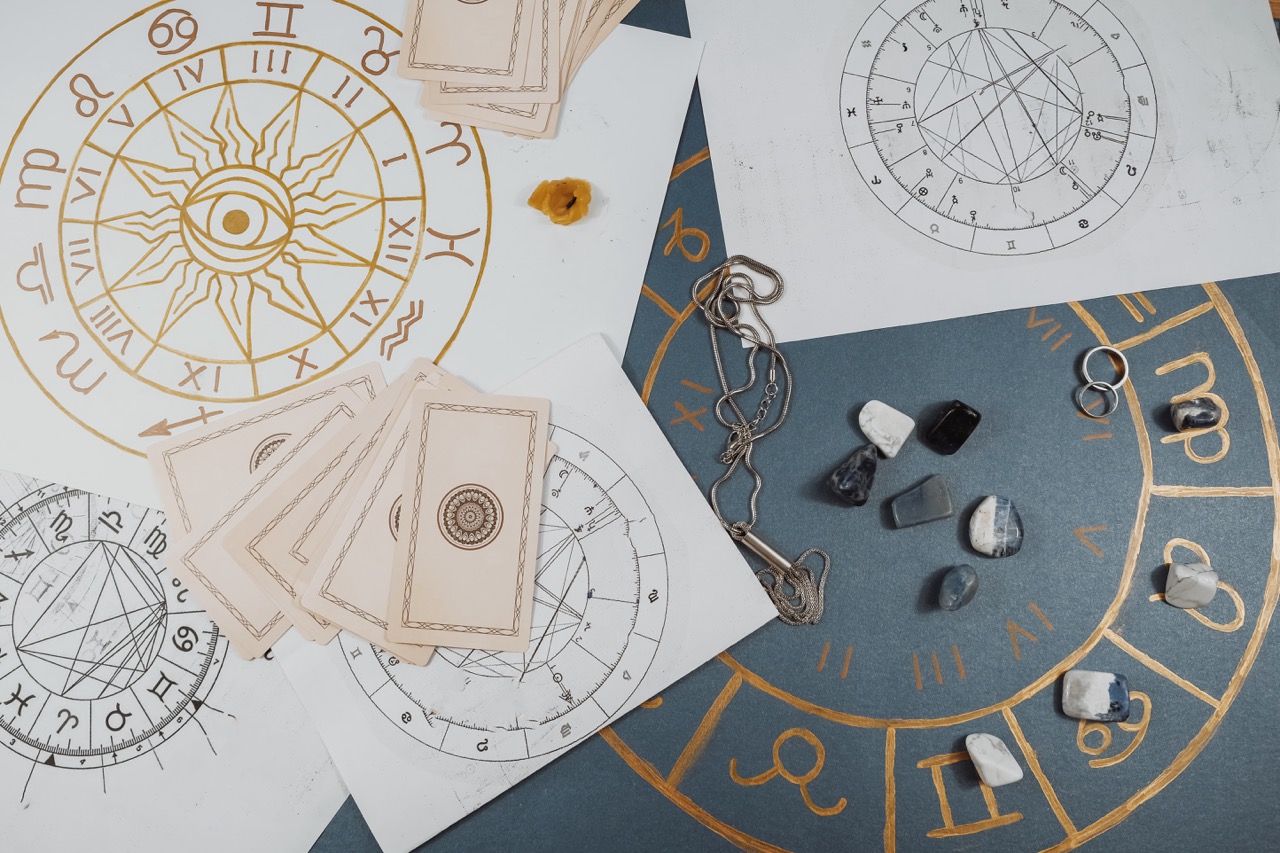In the vibrant tapestry of art history, few figures stand out like John Varley, a painter whose work transcended mere aesthetics to embrace the celestial wonders of astrology. Varley’s unique approach to art fused his creative expression with the mysteries of the cosmos, bringing a fresh perspective to both disciplines. In his celestial canvases, he meticulously blended color and form to evoke the energies of the zodiac, transforming the canvas into a portal through which the viewer might glimpse the universe’s hidden rhythms. This article explores Varley’s life, his astrological inspirations, and the enduring legacy he left behind—a legacy that continues to inspire artists and astrologers alike.
Celestial Canvases: John Varley’s Starry Inspirations
John Varley was deeply captivated by the cosmos, a fascination that guided his artistic journey. Born in 1778, he was influenced by the scientific advancements and astrological philosophies of his time. His travels across Britain and Europe opened his eyes to the beauty of the natural world, which he often correlated with celestial phenomena. Varley’s landscapes, infused with a sense of wonder, invite viewers to ponder the harmony between the earth and the stars. Each hillside and skyline in his paintings becomes a reflection of the heavens, a reminder of the delicate balance between terrestrial life and the universe’s grand design.
Varley’s astrological inspirations can be traced back to the belief systems that permeated the artistic community of 18th-century England. The Enlightenment era was characterized by a fascination with the stars, and Varley was no exception. He incorporated astrological symbols and motifs into his work, using them as a guide to express deeper meanings. The alignment of the planets and the zodiac were not just abstract concepts for Varley; they were integral to his understanding of life’s rhythms, imbuing his work with a mystical quality that resonates with viewers even today.
Furthermore, Varley’s use of color was influenced by astrological associations, where each hue corresponded to specific celestial bodies and their attributes. He believed that colors could evoke emotions and energies, mirroring the influences of planets on human affairs. For example, vibrant reds and oranges captured the fiery nature of Mars, while soothing blues echoed the tranquil presence of Venus. In doing so, Varley transformed his canvases into celestial charts, allowing viewers to experience a cosmic connection through the power of color.
Zodiac Colors: The Astrology Behind Varley’s Art
Central to Varley’s artistic vision was his belief in the significance of colors associated with the zodiac signs. Each astrological sign not only carries its own personality traits but also its own palette of colors. Varley’s paintings often depicted these chromatic associations, which he meticulously matched with the emotions and themes of the piece. For instance, he would use earthy tones to represent Taurus, evoking stability and groundedness, while airy pastels might be used to symbolize Gemini’s lightheartedness and adaptability.
By integrating this astrological color theory into his work, Varley created a multi-layered experience for his audience. Viewers would not only appreciate the visual beauty of his paintings but also engage in a deeper dialogue with the astrological principles underlying them. This approach encouraged an immersive experience, where one could contemplate their own connection to the stars while interpreting Varley’s artistry. Ultimately, this intricate relationship between color and celestial influence became a hallmark of Varley’s style.
Moreover, Varley’s exploration of color extended beyond the visual spectrum; it delved into the psychological realm as well. He believed that colors could invoke specific emotions and states of being, making his art not just a feast for the eyes but also a balm for the soul. By tapping into the qualities assigned to each zodiac sign, Varley’s pieces resonated with viewers on both personal and universal levels, marking a significant departure from traditional landscape painting toward a more emotive, cosmic experience.
Brushstrokes of Destiny: Painting the Cosmic Connection
Varley’s brushstrokes carried the weight of destiny, as he sought to paint the invisible threads that connect humanity to the cosmos. His belief in astrology as a guiding force shaped his artistic philosophy, leading him to explore how the universe influences individual lives. In many of his works, Varley depicted celestial themes—constellations, planetary alignments, and zodiac imagery—that served as metaphors for human experience. Through these depictions, he invited viewers to consider their own place in the cosmos, fostering a sense of connection with the larger universe.
In addition to exploring cosmic themes through his brush, Varley often integrated personal and collective narratives into his work. He would reflect on the human condition, examining how astrological forces could influence emotions, relationships, and life paths. This philosophical approach transformed his paintings into visual narratives that transcended their physical forms, allowing viewers to engage with the stories told by the stars. Varley’s art became a medium through which the complexities of existence could be explored and understood.
His commitment to portraying the cosmic connection also extended to his teaching. Varley was a mentor to many aspiring artists, sharing his unique vision and encouraging them to explore the intersections of art, nature, and the cosmos. His influence helped to cultivate a generation of artists who recognized the importance of infusing personal mythologies and universal truths into their work, ensuring that Varley’s legacy would resonate long after his time.
Beyond the Canvas: Varley’s Astrological Legacy Lives On
John Varley’s contributions to the art world remain influential long beyond his lifetime. His unique fusion of astrology and artistry has inspired contemporary artists to reevaluate the significance of celestial themes in their own work. Today, many artists explore the relationship between the cosmos and their creative process, drawing from Varley’s pioneering approach to create pieces that celebrate the interconnectedness of all things. His legacy serves as a reminder that art is not only a reflection of the external world but also an exploration of the unseen forces that shape our lives.
Additionally, Varley’s emphasis on color and its emotional resonance continues to inspire artists and art theorists alike. Today’s art movements often recognize the psychological and symbolic implications of color, echoing Varley’s belief in its power to evoke feelings and moods. The ongoing exploration of color theory can be traced back to pioneers like Varley, who understood that colors could transcend mere aesthetics and serve as a means of communication with the universe.
In the realm of astrology, Varley’s name is celebrated among those who seek to integrate artistic expression with astrological wisdom. His work encourages individuals to embrace their cosmic connections and recognize the artistry embedded in the universe. As we gaze at the night sky and contemplate our place among the stars, we are reminded of Varley’s legacy—an enduring invitation to explore the celestial influences that shape our destinies and inspire our own creative journeys.
John Varley’s artistic vision, deeply rooted in astrology, serves as a beacon for those who dare to explore the intersections between creativity and the cosmos. His ability to transform celestial inspiration into breathtaking art reminds us of the profound connections we share with the universe. As we continue to navigate our own paths, let us take a page from Varley’s book, embracing the colors of our destinies and the cosmic energies that surround us. Through art, we can celebrate not only the beauty of the world around us but also the intricate dance of the stars that guides us on our journey through life.




